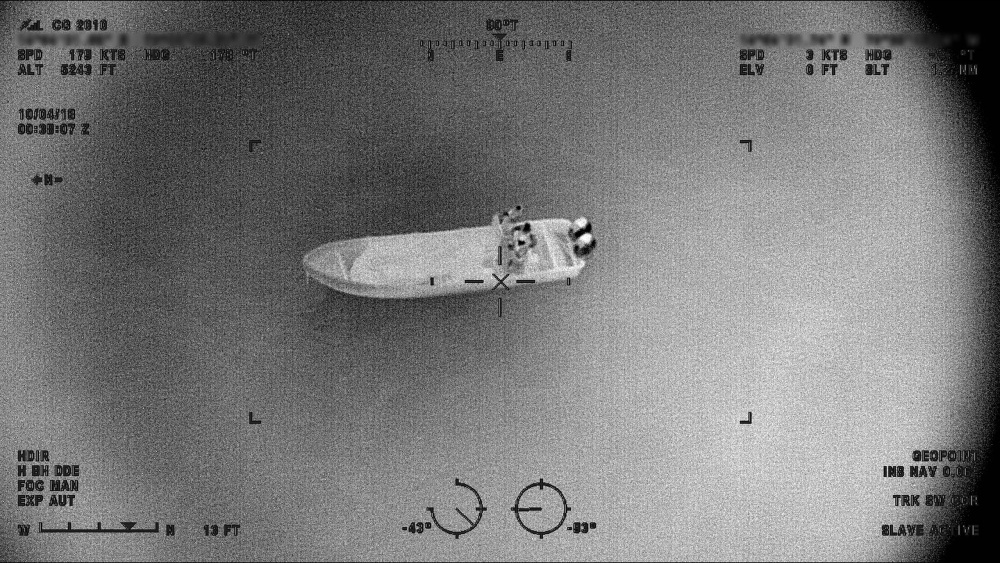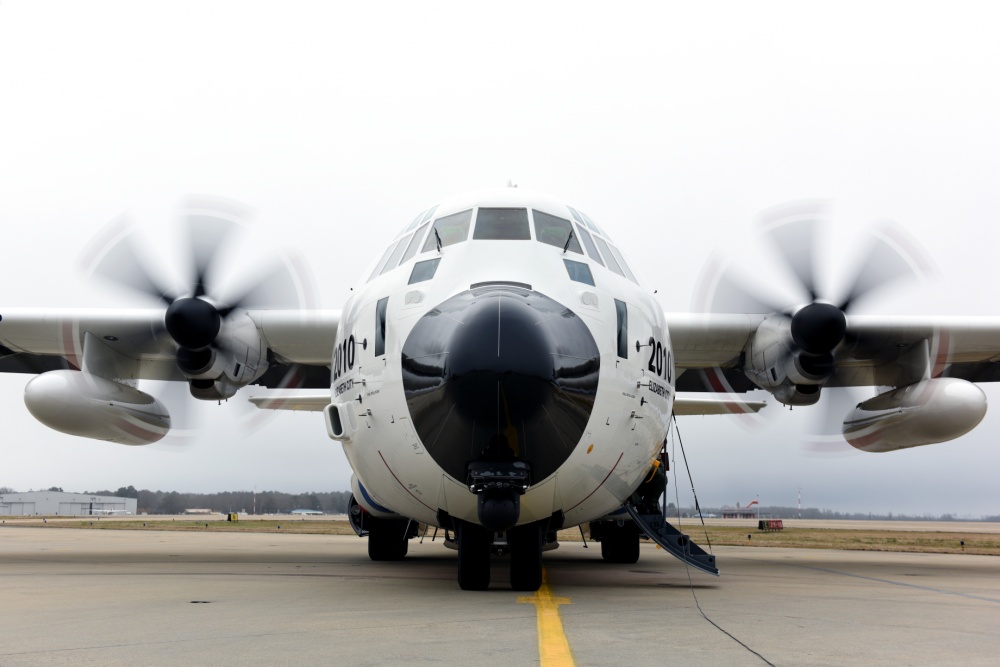Eyes in the Sky: Hunting Smugglers in All Weather
It was completely dark in the middle of the Caribbean Sea on the evening of October 3, 2018. Dense bands of cloud shrouded the moon, obscuring all light. Storms intermittently rumbled, dampening the darkness with sheets of rain.
Five thousand feet above the sea, a large white airplane sliced through the gloom, its telltale orange stripe and Coast Guard shield obscured by the shadows. Pilots and crew members inside the HC-130 Hercules airplane did not mind the obscurity; in fact, it was a critical part of their mission.
They had been sent into the black, windy night to search for a particular vessel, a panga boat suspected of transporting cocaine northward. Beyond their “search box,” a targeted area in international waters off Costa Rica, the aircrew was armed only with the HC-130’s sensory equipment, years of training and their own intuition.
Petty Officer 1st Class Matt Lotz, a seasoned mission system operator aboard the Hercules, used all three to locate the target. Wrestling with filters and scan methods, he used the plane’s camera to spot and track the panga down below, despite the pitch-black night.

Hovering far overhead, the Hercules crew initiated the “end game,” the final stage in which aircrews help surface assets locate targets. Coast Guard Cutter Donald Horsley, the nearest asset, steamed toward the panga and launched a small boat crew to close the final distance.
Little did the crews know that the end game would be rife with difficulty that night.
“The small boat crew experienced some technical difficulties,” said Lt. Patrick Spencer, aircraft commander of the HC-130. “Matt thought outside the box. He figured out a way to talk directly to the small boat so he could direct them to the target.”
Acting as the boat crew’s aerial navigator, Lotz guided them within 50 feet of the panga. The pursuit was short, but lively, with the panga crew leading the Coast Guard team in wild arcs through the darkness. With the Hercules aircrew serving as their eyes in the sky, Donald Horsley’s crew seized 600 kilograms of cocaine that night, a haul valued at approximately $17 million.
“When we get to see the end game, the actual drug bust, it gives the crew a sense of accomplishment,” said Lt. j.g. Zachary Georgia, an HC-130 pilot at Coast Guard Air Station Elizabeth City who routinely participates in Joint Interagency Task Force South’s counter-narcotics missions.
In 2018, HC-130 crews from Air Station Elizabeth City conducted more than 100 JIATF South aerial patrols, directly contributing to the arrests of 34 suspected drug smugglers and the interdiction of 27,000 kilograms of narcotics worth over $745 million. While working in Central America, the aircrews operate from several different locations, and their patrol coverage varies wildly during their deployments. When the crews receive task direction from JIATF South, they are directed to search an expansive area, to investigate a known target, or to insert themselves into the end game of an ongoing case.
“Flexibility is key,” said Petty Officer 1st Class Trevor Tufts, an aviation maintenance technician in charge of the HC-130’s mechanical functions while airborne. “We don’t actually know where we’re going until we get the pre-mission brief each day. I’ve had the location change 10 minutes before departure.”
Coast Guard aircrews work with a diverse array of entities and agencies while deployed in support of JIATF South, including the U.S. Navy, U.S. Air Force, U.S. Customs and Border Protection, and law enforcement agencies of surrounding nations. But according to the Coast Guard crews, the HC-130 Hercules airplane is what truly distinguishes them from their many teammates.
“We can offer twice the range of some of the other planes working down there,” Lt. Spencer said. “We simply have the best plane for the mission.”

Air Station Elizabeth City is home to five HC-130J Super Hercules airplanes, the more advanced version of older HC-130H airplanes, which Tufts said is an important distinction. The J-model of the HC-130 touts increased air speed, increased flight time, a camera equipped with infrared sensors, and a 360-degree surface search radar, all features that help aircrews efficiently hunt down drug smugglers.
Mission system operators like Lotz arguably benefit from the airplane’s equipment the most. As the person simultaneously communicating with JIATF South and other entities, monitoring the radar for possible targets, recording footage of action down below, and directing the movements of surface assets, Lotz said he appreciates the HC-130’s trappings.
“For an MSO, it’s our time to shine,” Lotz said. “I love it. I’d do it forever.”
Story by Petty Officer 2nd Class Corinne Zilnicki / U.S. Coast Guard. This article is available in its original form here.
The opinions expressed herein are the author's and not necessarily those of The Maritime Executive.

